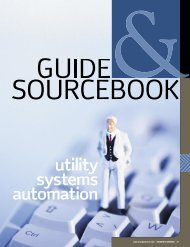Intelligent Utility Jan-Feb 2013
Intelligent Utility Jan-Feb 2013
Intelligent Utility Jan-Feb 2013
Create successful ePaper yourself
Turn your PDF publications into a flip-book with our unique Google optimized e-Paper software.
leverage GIS. For example, in asset<br />
management, utilities need to have a<br />
clear vision of the role that each system<br />
plays in the overall scheme of managing<br />
millions or even billions of dollars<br />
of assets in the field that keep the lights<br />
on for millions of customers. The GIS<br />
provides the locational data and in<br />
some cases is the repository for the<br />
asset data, while in other cases the asset<br />
data resides in another system, like SAP<br />
or Maximo. Factor in inventory store<br />
and crew dispatch functionality and<br />
the requirement for clean integration<br />
becomes readily apparent. Here’s a new<br />
driver to the asset management world:<br />
the proliferation of sensors across the<br />
grid creates more opportunities to<br />
manage those assets predictively, and<br />
with an integrated GIS, spatial analysis<br />
of the repair-versus-replace decision<br />
can identify trends and streamline<br />
maintenance processes.<br />
On the customer service and<br />
engagement side of the utility, the<br />
potential roles of GIS are too many<br />
to list here, but, for example, spatial<br />
analysis can be integrated with third-party demographic data for debt collection<br />
and improvement. Or companies can integrate third-party demographic and<br />
even income data to profile and target customers for energy efficiency or<br />
demand response programs. Also, everybody who has a smart phone is a source<br />
of customer intelligence with a utility’s ability to spatially analyze the unstructured<br />
data from Twitter tweets for a variety of customer service applications,<br />
like outage reporting and bill payment.<br />
When I get someone with Bill’s experience and wisdom on the line, I always<br />
like to throw out a crystal ball type of question, which in this case was about<br />
what benefits might come out of the analytics era that we aren’t necessarily<br />
thinking about right now. Bill didn’t miss a beat and jumped right on this: “I<br />
think and am hoping that smart meter data will eliminate many of the bad<br />
surprises that I have experienced over the years in utility operations. Especially<br />
things blowing up—like when transformers overload and blow up. Smart meter<br />
data will enable better monitoring of the system health and well-being of their<br />
assets. Also, with the smart grid there will be more prediction of failure than actual<br />
failure itself. This will also enable the system to run more effectively, and this<br />
might even enable utility staff to learn more about the system that they never<br />
knew. With more data available, patterns will emerge and intelligence will result.”<br />
The analytics market continues to be a field rich in opportunity for improvement<br />
of utility grid and customer operations, and GIS can and will be a key<br />
piece of utilities realizing the full potential of their investments in analytics.<br />
For more on GIS, see the feature “GIS evolves into backbone for cooperatives” on page 12<br />
of this issue. Artwork courtesy of ESRI.<br />
This article originally appeared in the <strong>Utility</strong> Analytics Weekly e-newsletter. To subscribe to<br />
the newsletter, visit www.utilityanalytics.com. Mike Smith is a vice president with the <strong>Utility</strong><br />
Analytics Institute. He may be reached at msmith@energycentral.com.<br />
WWW.INTELLIGENTUTILITY.COM 35


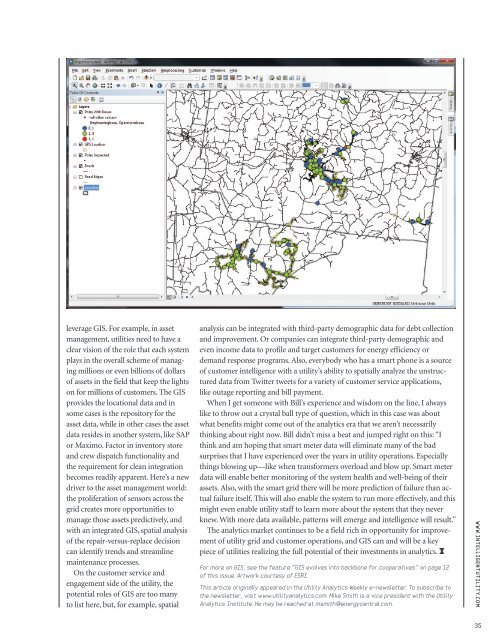
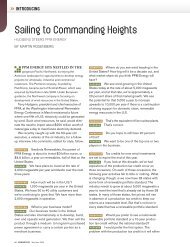
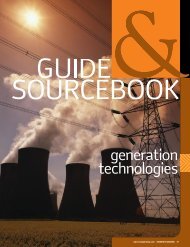
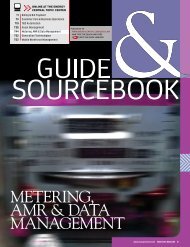









![View From the Trenches [PDF]](https://img.yumpu.com/18854438/1/190x252/view-from-the-trenches-pdf.jpg?quality=85)
